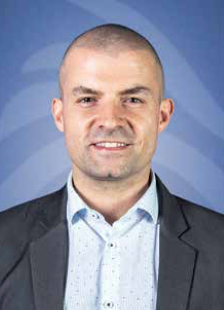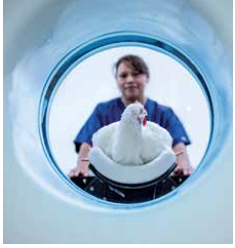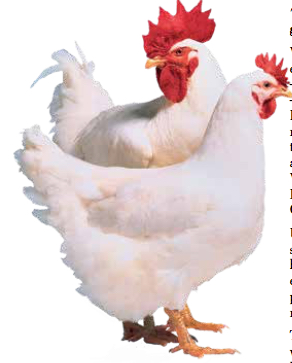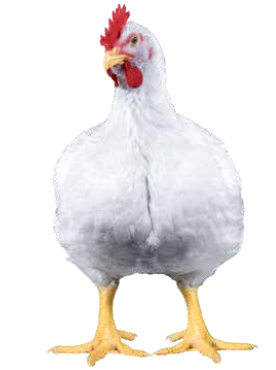
Dr Rafael Monleon, business manager for Aviagen Asia Pacific, shares his views on poultry business trends amid the coronavirus pandemic and key changes in animal welfare, management, genetics improvement and technical support. He also addresses hatchery issues, nutrition and the company’s production manual aimed at helping customers fully utilize the birds’ genetic potential.
1. What are strengths of Aviagen’s products?
The performance of our products is currently outstanding, with clear advantages in reproductive output, and a very competitive broiler. Aviagen birds are bred to be robust and perform in a broad range of environments. At the same time, Aviagen maintains a broad portfolio of birds designed to fit specific market requirements. When market requirements change, to demand, for example, more breast meat, or differentiated growth rates, we are ready to adapt. All of our lines are selected using a balanced approach to ensure that needs are met at each level of the production chain. We are the only breeder that currently offers multiple brands, allowing us to tailor our product offering and services to local markets the world over.
We have built very strong regionally based support teams, who understand the intricacies and unique needs of their regions. At the same time, we have a globally supported technical transfer team that collaborates with our field teams, along with internal and external researchers to ensure that our knowledge is consistently updated and communicated effectively to our teams and clients.
Aviagen was the first breeding company to supply from multiple breeding programs, and was more recently the first breeding company to have major supply bases certified by the appropriate national authorities to allow supply under compartmentalization. This puts us in a strong position to maintain unbroken supply to our clients when challenges such as Avian Influenza arise around the world.
2. Any updates for a technical handbook or manual to be issued in 2021?
We update our handbook about every five years, with the last handbooks published in 2018, so we are not expecting a full update for a few more years. As our understanding of optimal management develops, we aim to update the industry via management advice and best-practice documents that are released as appropriate, and these may be combined with a rewrite of the handbooks.
Our Performance Objectives are updated more frequently due to rapid improvements being delivered by our development team; we expect revised PS Objectives to be available in early 2021 and Broiler Objectives in late 2021 or early 2022.
In Asia, we have committed to providing our key documents in regional languages, including Mandarin, Japanese, Thai, Bahasa, Korean, Tagalog, Bengali and Vietnamese. This is a process that we have recently started, and we look forward to releasing these translated materials early in 2021. Additional languages for our brands will be available within the next six months. As documents are updated, we will provide more translated materials.
3. What are the main changes in, for example, nutrition and hatchery practices?
The main developments will always be in the area of genetics as part of our constant ongoing improvement programs. That being said, we have a substantial team of experts who are constantly reviewing best practices in all areas of the business, and as the genetics change and our understanding of our birds and production systems evolve, these will be reflected in our most up-to-date advice. As a result of our continual improvement, it is necessary to periodically adjust our advice to assist customers in maximizing the reproductive performance of the birds. By soliciting feedback from clients and our various representatives around the world, we are able to pull together those key practices that optimize the potential of our stock. One area of focus will be updated Grandparent (GP) Nutrition Advice.
4. Any updates on animal welfare?
The sustainability of poultry production relies on the well-being of our birds. In line with the internationally accepted “Five Freedoms” as the ideal state to strive for, our birds are provided with fresh water, nutritious feed, proper handling, health care and environments appropriate to their needs. We also work in line with the “Three Essentials of Stockmanship” (the knowledge and skills of animal husbandry, along with empathy with and dedication to the birds). We also use these as guidance in our customer advice.

Welfare is an intrinsic and important element in our breeding program. We take a balanced approach to our breeding, with equal priority placed on health and welfare, reproduction and performance traits.
Our balanced approach of simultaneously improving more than 50 traits has led to measurable improvements, not just in production, but also in welfare and sustainability.
Sustainability was the focus of our recent Indian River Training Academy, where we explored Antibiotic free (ABF) production, the use of alternative feed ingredients, the emergence of robots and big data, amongst other topics. All of these supported the more effective use of resources and support for the welfare of the birds.
5.What are Aviagen’s leading products?
In Asia, all three Aviagen brands – Arbor Acres, Indian River, and Ross – are recognized leaders in various markets. Depending on the region, different products may dominate; for example, in Latin America, Ross 308 AP is the preferred bird, while in North America, the Ross 708 tends to be the bird of choice.

The remainder of the world finds the Ross 308, Arbor Acres Plus and Indian River most suited to their market needs. These birds compete with each other in various countries. While the crosses are similar enough to compete effectively within a market, each has its unique profile that may be more advantageous to certain management strategies or end products.
In addition to our female offerings, Aviagen has started to offer various Males on a region-by-region basis. This allows for further targeting of the performance mix required in specific markets and is something we will expect to see more of in future.
6. Any interest to introduce Indian River in Thailand?
At this time, we enjoy a strong relationship with our joint venture partners in Thailand who distribute Arbor Acres and Ross, and we have no current plans to introduce another brand.
7. Please highlight Aviagen’s major genetics goals for 2020-2025.
We are focusing our improvement efforts on the 3 pillars of sustainability – Environmental, Economic and Social – as well as the top 5 UN Sustainable Development Goals (SDGs). The SDGs reflect areas where the meat poultry sector can make a difference for sustainability: Zero Hunger; Good Health and Wellbeing; Quality Education; Industry, Innovation and Infrastructure; and Climate Action.
Upholding the Environmental pillar of sustainability, through our balanced breeding approach, we create production efficiencies that reduce our carbon footprint, helping to sustain the earth for current and future generations.
The emphasis of the Social pillar is on the well-being of people. We contribute to the health and welfare of people by helping our customers put #FoodOnEveryTable in communities around the world. We also care about our employees, future professionals and the communities we serve.
We support the Economic pillar by promoting the businesses of our customers, the world’s poultry producers. Improvement in Feed Conversion Ratio (FCR) means that the broiler of today requires less feed than in years past, and feed makes up 70% of production costs. Other breeding advancements that boost the bottom line of producers include enhanced growth rate, high meat yield, and excellent bird health and robustness. And finally, we promote business success by offering a variety of breeding stock, enabling our customers to offer the right bird for the right world market.
If we cover the first two pillars well and select the birds and traits that are desired by retailers and consumers, we will fulfill the requirements for the economic pillar. To support these themes, we see continued use of existing technology, such as selecting families in contrasting environments, using Radio Frequency Identification (RFID) technology to track feed and water intake, applying imaging technologies to allow us to look at the organs and muscle masses of the birds in a noninvasive way, as well as genomic technologies.
8. What is the best performance for the Ross 308 broiler and PS in Asia Pacific so far?
We see outstanding results with all of our brands, not just the Ross. In Thailand, for instance, an Arbor Acres customer averaged 165 chicks per hen housed to 64 weeks, with their best flocks achieving in excess of 175 chicks at the same age. The single best flock in the Asian region achieved 180.2 sellable chicks to 64 weeks, with Ross 308 flocks reported in the previous year.
In New Zealand, the 400 Club (an award for growers achieving a European Performance Efficiency Factor (EPEF) of 400 or higher) has recently been changed to the 450 Club to reflect the outstanding performance of producers there. In New Zealand, we are even seeing EPEFs of over 500 (with the best reported so far this year at 512), which shows what the Ross 308 can do in nearly optimal conditions. Under the more challenging conditions of most of the Asia Pacific region, EPEFs of around 400 are becoming more and more normal. In open-sided housing in Bangladesh, Indian River has reported flocks achieving over 420 EPEF. Arbor Acres in Korea routinely sees whole complexes averaging close to 400, and Ross has achieved these numbers in Thailand, Japan and other territories. The potential is there, but the management in its widest sense (nutrition, biosecurity, stockmanship, capital investment, etc.) is often the limiting factor to achieving these results.
9. How has COVID affected your marketing and sales growth?
We cannot express enough thanks for the dedication of our export teams around the world, the support of the airlines and the patience of our clients. The major challenge that we have seen with COVID has been in the shrinking pool of aircraft available for the transport of chicks and local restrictions on the opening of airports. Many routes simply shut down or offered only narrow-body aircraft, which are unsuitable for chick transport, replacing the typical wide body planes for flights. We had to move some orders and find new routes and new ways of moving chicks.
Traditionally, we were limited to one or two pallets of chicks per plane. Working with Qatar Airlines, we were able to set a new world record of 16 pallets of chicks on a single aircraft, routed especially for the delivery of chicks into Bangladesh, to fulfill the requirements of our GP and PS customers there. Many of our team have obviously been unable to visit their traditional clients. When possible, we have had local team members support in-country visits with clients they may not routinely support. We have also made substantial use of webinars and other technology to support our clients remotely. We have used video chat to look at on-farm conditions and bird health.
We have conducted monthly Zoom performance reviews. This year our annual training seminars were held online, with extensive use of pre-recorded material, as well as interactive live sessions. These were streamed from our very own production studio, created in the Bangkok office. Our marketing team has worked hard to maintain touch points with our clients, and even bring forward new initiatives such as the Hatching Young Artists competition to support the development of artists in Thai Universities. Their work will be featured in our promotional materials for the next year.
The positive side of COVID is that it has given us time and space to look at our approaches and ask ourselves how we can do things differently or better. Communication was key for us, not just in the use of technology, but also spending time together as a team in our new office. We feel that if improved communication works for us internally, it will enhance our ability to understand our customers’ needs. This allows us to challenge ourselves to do better going forward.
10. Have you needed to make adjustment to remain strong given the current market slowdown?
We see that, while the overall market has shrunk somewhat in a number of Asian markets over the COVID period, we have been able to maintain our sales volumes. This tells us that some clients are moving more of their volume away from our competitors towards Aviagen products.
Many industry watchers are predicting a robust rebound in mid-2021, and we are seeing these sentiments reflected in our GP orders at present. The announcements of increasingly successful vaccine development give everyone hope the situation will recover fairly rapidly. The reopening of Quick Service and dine-in restaurants in many parts of the world will, in turn, revive consumer demand for chicken. It seems likely that home cooking will remain popular post COVID, which will be good for retailers. Given its relatively low price point compared to other animal protein sources, chicken has generally not been impacted as badly as other meats, and as economies restart, it is likely that chicken will remain the meat of choice.

